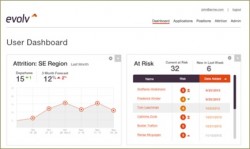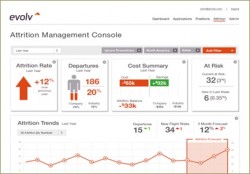 Chances are you haven’t thought of the morning weather report as an example of big data at work. But it is.
Chances are you haven’t thought of the morning weather report as an example of big data at work. But it is.
Pulling together information from ground weather stations, satellites, ocean buoys, and historical records, meteorologists are able to offer a remarkably accurate prediction of what today’s and tomorrow’s weather will be. Even the seven-day forecast has become far more accurate than not, as the amount of data that figures into each prediction has grown over the years.
This is the growing field of predictive analytics, which, in the case of weather, influences the price of energy on Wall Street, and the supplies a utility lays in, not to mention how you dress for the day ahead.
For years companies have used big (or sometimes little) data to make predictions about everything from the amount of inventory to buy, to the most efficient routing for deliveries, to sales projections for the next quarter and next year.
But it’s only been in the last few years that big data and the predictive value it holds has made its way into the human resources department. Credit Billy Beane and Moneyball for spreading the gospel of statistics. The Atlantic discussed this trend in detail a few months ago.
The potential is enormous. Consider the value of knowing whom among your most skilled workers was likely to leave in the next three months? But exactly what factors, what data, do you take into account to predict that or, for that matter, to predict anything at all?
The biggest companies have analytics groups within HR who make those decisions. They work with I/O psychologists and statisticians to find the patterns most likely to make accurate predictions and find hidden connections.
Now companies are emerging to provide that service. Evolv is one of the oldest in this very young field. This week it announced a major step forward in making its cloud-based predictive analytics tools, Evolv Insights, broadly available. In conjunction with Evolv Selection, managers and talent leaders can make far more informed judgments about the workforce than they ever could using even the best assessment testing available.
“We find patterns across the data,” explains Jack Mazzeo, Evolv’s senior director, product management. It’s a simple explanation of an enormously complex process that requires large amounts of data, regular feedback, and the development of algorithms that are the secret sauce.
Just as weather prediction has improved as meteorologists and mathematicians discovered which of the millions of data bits exert more influence than others, so do Evolv’s algorithms. A company’s own data is a big part of the recipe, but the collected wisdom of other predictions is factored in as is publicly available data, such as from the U.S. Bureau of Labor Statistics.
“It’s a combination of data,” Mazzeo says. “We factor in a number of contributions …  run a massive number of permutations,” he adds, to “see a little bit into the future.”
run a massive number of permutations,” he adds, to “see a little bit into the future.”
All that occurs behind the scenes, of course. What HR professionals see are graphically presented results that, in the example Mazzeo and Carl Tsukahara, executive vice president, marketing and product, used, show what factors go into influencing a person’s decision to leave. And how much they contribute to the overall decision.
“If they want to understand the causal factors that are causing their attrition, we tell them,” says Tsukahara. If you want to know specifically who is at risk, Evolv tells you so, he adds, you can “act before the person leaves.”
In announcing the product availability, the company’s release observes that:
Evolv Insights allows managers to model different scenarios for achieving operational goals and then apply ‘what if’ analysis to forecast the impact specific changes will have on achieving them. As a result, companies can proactively improve the quality, productivity and performance of their workforce to align with business goals.
At the other end of the lifecycle, Evolv Selection works with assessment tools and and the collective company data to offer predictions about whom will make the best hire.
Alas, these tools and the services don’t come cheap or easily. They are not for small companies, whose data is too small, too incomplete, or too confused. For patterns to be discerned and be reliably used in making predictions, big data is needed. How big? Fortune 1500 size, says Mazzeo.
The cost to get started and set things up can run into six figures. Thereafter, the monthly expense is in the double-digits.